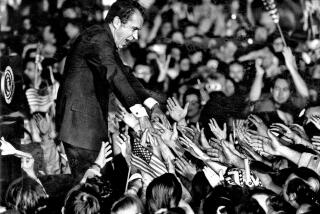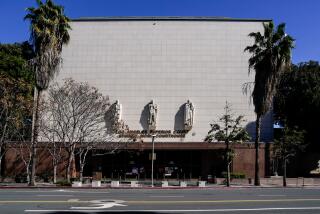An Affirmative Action Strategy for Grand Jury : Justice system: Recruiting for panel, especially minorities, will be greatly expanded.
- Share via
SANTA ANA — Responding to criticism that the Orange County Grand Jury needs greater minority representation, court officials said Wednesday that they are launching the largest effort yet to recruit applicants for the 1994-95 grand jury session.
Strategies to increase the number of applicants in general and minorities in particular will be announced Tuesday by Presiding Superior Court Judge Donald E. Smallwood, other top court officials and grand jury members who came up with the plan.
“The basic purpose is to raise everybody’s level of awareness about the grand jury in an attempt to get more people involved,” Smallwood said, adding that the Orange County Board of Supervisors will be asked to declare November “Grand Jury Awareness Month.”
Organizations that have been critical of the grand jury in the past are being urged to recommend people during the application period from November through January, said Alan Slater, executive officer of the Orange County Superior Court.
“It can’t hurt, and we can only do better,” said Slater, who said he believes the current grand jury selection process recruits a fair cross-section of county residents.
Arturo Montez, president of the Santa Ana branch of the League of United Latin American Citizens, said Wednesday he applauds the effort.
“I think this is a recognition that there is a need for more diversity,” he said.
The Special Issues Committee of the current grand jury originated the plan following controversy over a 1992-93 grand jury report that called for a nationwide ban on immigration and linked illegal immigration to many societal ills, Slater said.
Latino-rights advocates denounced the report as racist, while further criticism focused on the lack of diversity on the panel itself.
The 1992-93 grand jury had 17 Anglos and two Latinos. The 1993-94 grand jury, sworn in July 1, had 15 Anglos, two Latinos, one African-American and one American Indian.
Eligible applicants are reviewed by a panel of judges and 30 jurors are chosen by lot.
Court officials say it is a challenge to find people willing to dedicate 12 months to a full-time job that pays $25 per day. Grand jurors meet up to five days a week and often put in long hours. Critics, however, say the court system has not done enough.
The dispute prompted Latino-rights activists to file a complaint with the U.S. Commission on Civil Rights. Additionally, several defense attorneys are pursuing a court challenge to the selection process that could ultimately seek to overturn criminal indictments.
Slater said the criticism has not been all bad.
“I think something good came out of the . . . furor over that particular report, because people began asking themselves ‘What is this grand jury anyway?’ ” Slater said. “That’s the question we want people to ask and then we want them to get involved.”
More to Read
Sign up for Essential California
The most important California stories and recommendations in your inbox every morning.
You may occasionally receive promotional content from the Los Angeles Times.











